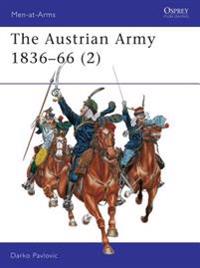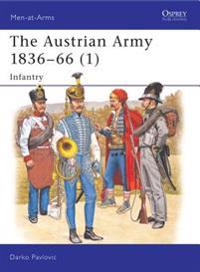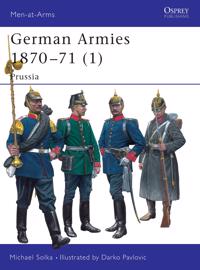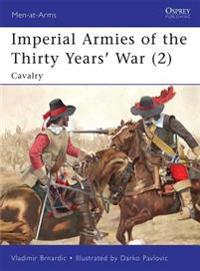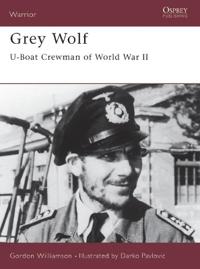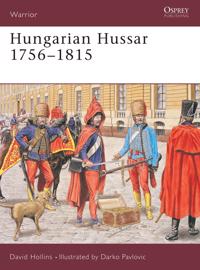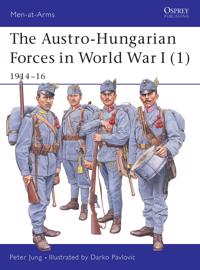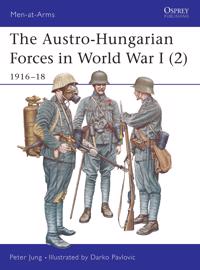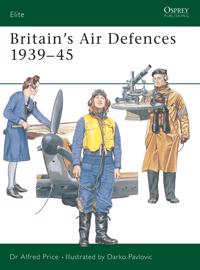The Austrian Army, 1836-66 (2) (Pocket)
avDarko Pavlovic, Darko (ILT) Pavlovic, Darko Pavlovic
ISBN: 9781855328006 - UTGIVEN: 1999-07The huge, multi-national Austro-Hungarian army was a major factor in mid-19th century European politics. Sharing borders with ramshackle Ottoman Turkey and volatile Italy, the Empire was threatened both internally - by growing nationalist esentments - and externally by the ambitions of France and Pr[...]
The Austrian Army 1836-66 (1) Infantry (Pocket)
avDarko Pavlovic, Darko (ILT) Pavlovic, Darko Pavlovic
ISBN: 9781855328013 - UTGIVEN: 1999-03In the mid-19th century, Austria comprised a heterogeneous, multi-ethnic empire consisting of the Austrian or 'German' area; the Hungarian area; the Military Border; and the Kingdom of Lombardy-Venetia. The diverse nature of the empire made it difficult to create a unified and up-to-date military sy[...]
German Armies 1870-71 (Häftad)
avDarko Pavlovic, , Men at Arms, 416
ISBN: 9781841767543 - UTGIVEN: 200408In 1870 Bismarck, Prime Minister of Prussia, engineered a war with France that would result in the fall of the Second Empire. It was the first modern European war and saw the use of bolt action rifles, machine guns, railway transport and professional general staffs. This war led to Germany's unifica[...]
Imperial Armies of the Thirty Years' War (2) (Pocket)
avVladimir Brnardic, Darko Pavlovic, Vladimir Brnardic, , Men at Arms Series
ISBN: 9781846039973 - UTGIVEN: 201011This history of the Catholic armies of the Habsburg Empire that fought in the Thirty Years' War explores the role of cavalry during the last major religious war in mainland Europe, which saw the end of the large mercenary forces and the beginnings of the well-disciplined national army. This book cha[...]
Grey Wolf (Pocket)
avGordon Williamson, Darko (ILT) Pavlovic, Gordon Williamson
ISBN: 9781841763125 - UTGIVEN: 2001-12There have been few military formations in history which have elicited such mixed reactions as the U-Boat Waffe of Hitler's Kriegsmarine. Often seen by those seamen who suffered the predations of Grossadmiral Donitz's "Grey Wolfs" as some sort of sadistic monsters, the men of the U-boat arm in fact [...]
Hungarian Hussar 1756-1815 (Pocket)
avDavid Hollins, Darko (ILT) Pavlovic, David Hollins
ISBN: 9781841765242 - UTGIVEN: 2003-12Hungary was the home of the elite Hussar. These skilled, daring and flamboyant light cavalrymen were first drawn for Hapsburg service from what is now northern Croatia, Serbia, Slovakia and Hungary in the late 17th century. It was not long before most nations in Europe adopted both Hussar formations[...]
Austro Hungarian Forces in World War I (Pocket)
avPeter Jung, Darko (ILT) Pavlovic, Peter Jung
ISBN: 9781841765945 - UTGIVEN: 2003-05The Austro-Hungarian forces were of central importance in World War I; it was Austria's crisis in the Balkans that began the war. Austria put huge armies into the field against the Russians, and against Italy on the Alpine front, leading to some of the greatest battles of the war (Caporetto, the Iso[...]
The Austro-Hungarian Forces in World War I (2) 1916-18 (Pocket)
avPeter Jung, Darko (ILT) Pavlovic, Peter Jung
ISBN: 9781841765952 - UTGIVEN: 2003-12The Austro-Hungarian forces were of central importance in World War I; it was Austria's crisis in the Balkans that began the war. Austria put huge armies into the field against the Russians, and against Italy on the Alpine front, leading to some of the greatest battles of the war (Caporetto, the Iso[...]
Britain's Air Defences 1935-45 (Pocket)
avAlfred Price, Darko (ILT) Pavlovic, Alfred Price
ISBN: 9781841767109 - UTGIVEN: 2004-04German daylight raids on Britain began in the summer of 1940. They were expected and the country had been preparing for quite some time. Searchlights were in place, Fighter Command had been expanded, and anti-aircraft guns were being manufactured. It was from these first preparations that Britain de[...]

